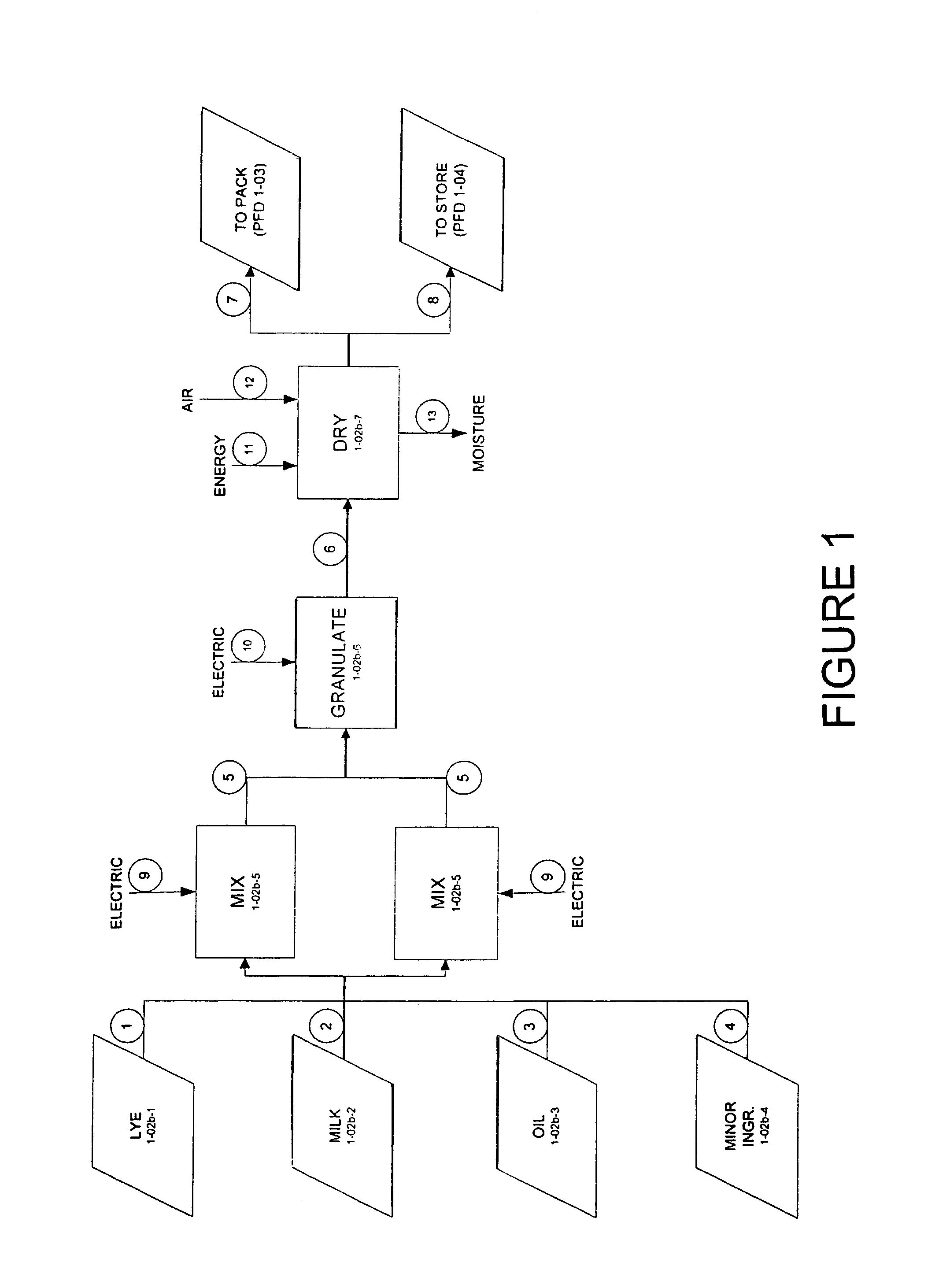Organic laundry detergent and method of producing the same
a technology of organic laundry detergent and laundry powder, which is applied in the field of laundry detergents, can solve the problems of uncontrollable water runoff, unsustainable ecological recapturing and treatment, and harmful effects of conventional detergent products on the environment, and achieve the effect of reducing the harmful effects associated with detergent products
- Summary
- Abstract
- Description
- Claims
- Application Information
AI Technical Summary
Benefits of technology
Problems solved by technology
Method used
Image
Examples
example 1
[0053]A preferred method of manufacture generally includes mixing the relatively liquid or soft ingredients such as the milk, beeswax, sodium hydroxide, and oil first. At trace or thickening, add dry ingredients such as but not limited to sugar, baking soda, corn starch, and borate. It is contemplated that the adding of the dry components may generally stop the chemical reaction. It is further contemplated that a preferred embodiment includes mixing in flour with the generally dry ingredients.
[0054]The ingredients may be mixed in a blender with a preferred embodiment of mixing until the mix substance becomes powder. The time for blending may be but is not limited to about 30 minutes. A preferred temperature for mixing may be but is not limited to about 60° F. or less. It is understood mixing time and temperature may be greater or less than that specified.
[0055]The powder mix substance is then generally placed in a dryer / grinder such as but not limited to the brand sold under the tra...
example 2
[0056]In another preferred embodiment of the invention, the drying and curing may be eliminated. A preferred method of manufacture still generally includes mixing the milk, beeswax, sodium hydroxide, and oil first. At trace or thickening, add dry ingredients of sugar, baking soda, corn starch, and borate. It is further contemplated that a preferred embodiment includes mixing in flour with the generally dry ingredients.
[0057]The ingredients may be mixed in a blender such as but not limited to a ribbon blender with a preferred embodiment of mixing until the mix substance becomes powder. The time for blending may be but is not limited to about 30 minutes. A preferred temperature for mixing may be but is not limited to about 60° F. or less. It is understood mixing time and temperature may be greater or less than that specified.
[0058]The powder mix substance is then generally placed in a hammer mill type grinder. When the powder mix substance is of a general consistency of fine flour, it...
example 3
[0059]In still another preferred embodiment of the invention, the components still generally include mixing the milk, beeswax, sodium hydroxide, and oil first. At trace or thickening, add dry ingredients of sugar, baking soda, corn starch, and borate. It is further contemplated that a preferred embodiment includes mixing in flour with the generally dry ingredients.
[0060]The mixture is then placed into a mold. The mixture is dried and cooled at room temperatures with a stream of air at ambient temperatures of 320 and 60° F. applied to surface of molds. In a preferred embodiment, drying and cooling may occur for about 12 hours. It is understood that the time may be greater or less and is not limited to about 12 hours.
[0061]The molds are then cut into pieces. The cut pieces are then generally dried and cooled at room temperatures with a stream of air at ambient temperatures of 32° and 60° F. applied to surface of cut pieces. In a preferred embodiment, drying and cooling may occur for a...
PUM
| Property | Measurement | Unit |
|---|---|---|
| temperature | aaaaa | aaaaa |
| temperatures | aaaaa | aaaaa |
| temperatures | aaaaa | aaaaa |
Abstract
Description
Claims
Application Information
 Login to View More
Login to View More - R&D
- Intellectual Property
- Life Sciences
- Materials
- Tech Scout
- Unparalleled Data Quality
- Higher Quality Content
- 60% Fewer Hallucinations
Browse by: Latest US Patents, China's latest patents, Technical Efficacy Thesaurus, Application Domain, Technology Topic, Popular Technical Reports.
© 2025 PatSnap. All rights reserved.Legal|Privacy policy|Modern Slavery Act Transparency Statement|Sitemap|About US| Contact US: help@patsnap.com

